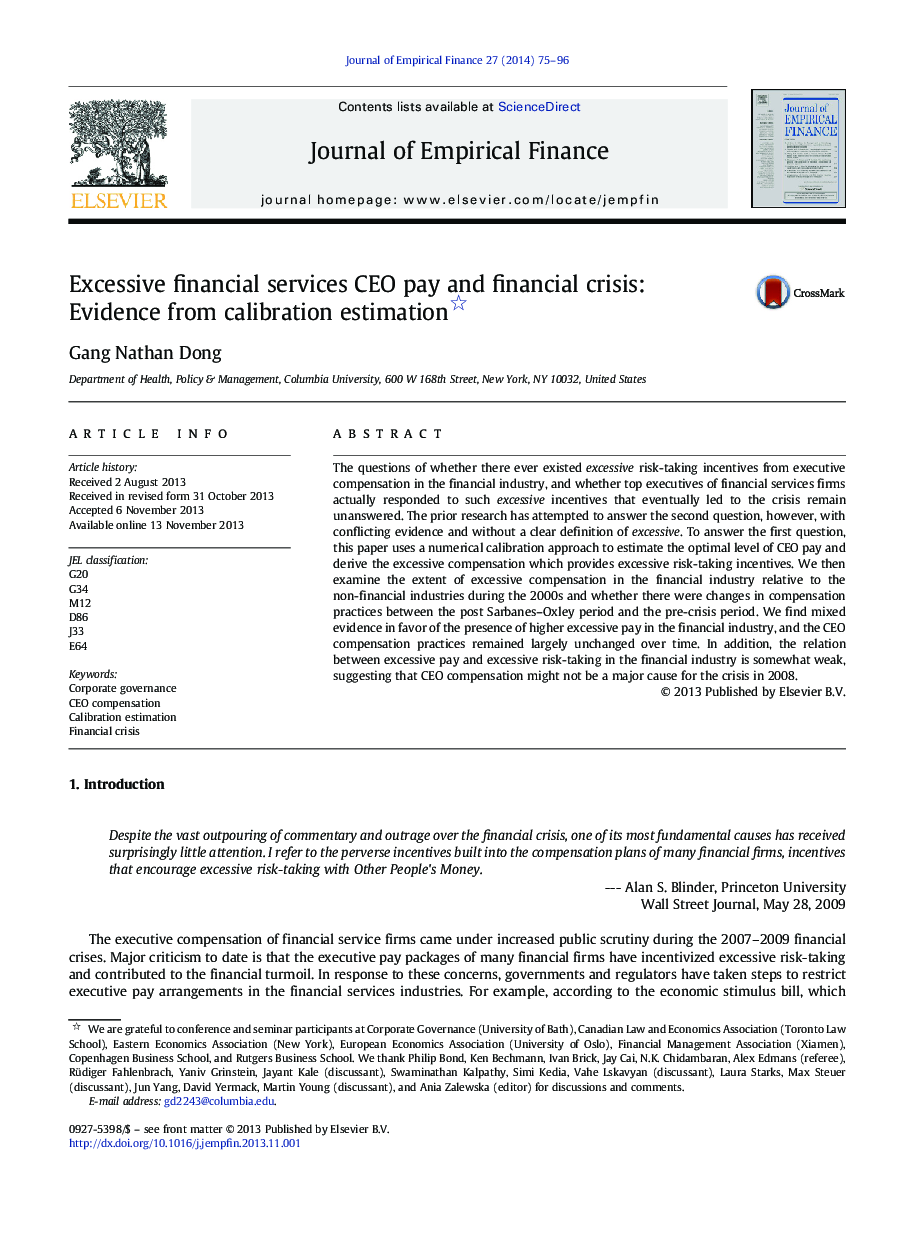| Article ID | Journal | Published Year | Pages | File Type |
|---|---|---|---|---|
| 958534 | Journal of Empirical Finance | 2014 | 22 Pages |
•We estimate excessive compensation using numerical calibration.•We find mixed evidence of higher excessive CEO pay in the financial sector.•Financial services CEO compensation practices remained largely unchanged over time.•Weak relation between excessive CEO pay and risk-taking in the financial sector.•This suggests that CEO compensation might not be a major cause for the crisis in 2008.
The questions of whether there ever existed excessive risk-taking incentives from executive compensation in the financial industry, and whether top executives of financial services firms actually responded to such excessive incentives that eventually led to the crisis remain unanswered. The prior research has attempted to answer the second question, however, with conflicting evidence and without a clear definition of excessive. To answer the first question, this paper uses a numerical calibration approach to estimate the optimal level of CEO pay and derive the excessive compensation which provides excessive risk-taking incentives. We then examine the extent of excessive compensation in the financial industry relative to the non-financial industries during the 2000s and whether there were changes in compensation practices between the post Sarbanes–Oxley period and the pre-crisis period. We find mixed evidence in favor of the presence of higher excessive pay in the financial industry, and the CEO compensation practices remained largely unchanged over time. In addition, the relation between excessive pay and excessive risk-taking in the financial industry is somewhat weak, suggesting that CEO compensation might not be a major cause for the crisis in 2008.
